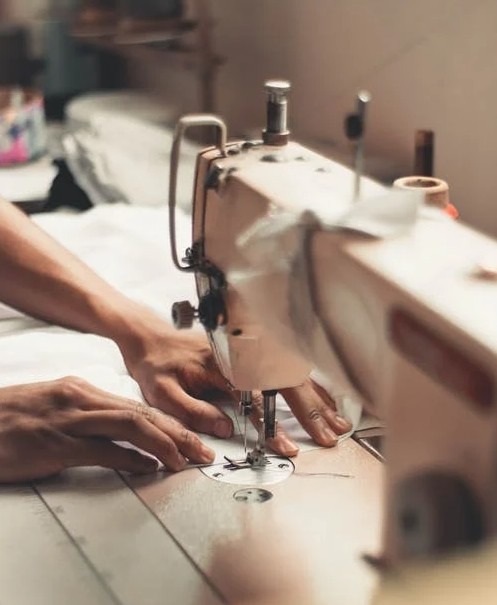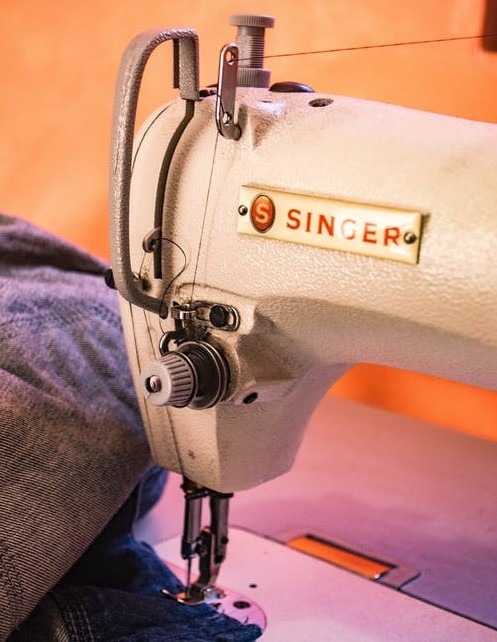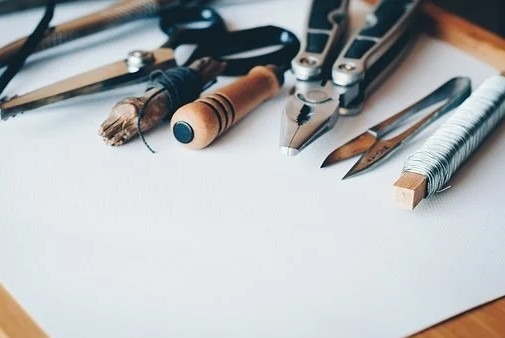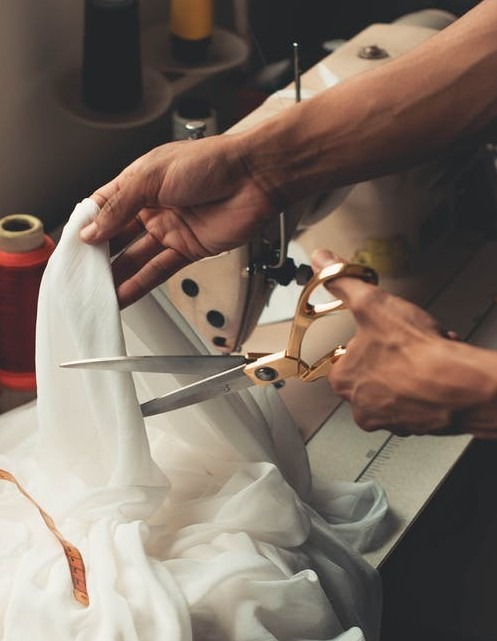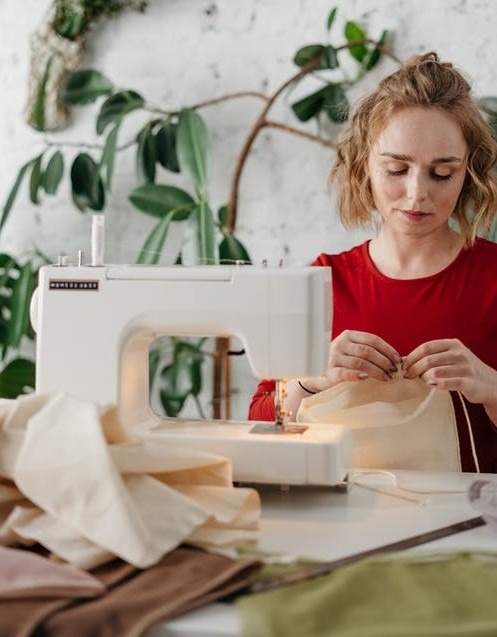Sewing can be challenging for you to learn and improve at first. However, it can be the source of fun if you are well prepared and ready to take the challenge by getting fully equipped. There are a number of suggestions and tactics that can impressively help you in learning sewing for the first time. It is an activity that is interesting whether you sew with hand or via sewing machine. Your satisfaction with the activity improves as you improve your expertise in it with the passage of time and practice.
Here is the list of useful tips that can really help you in your first time sewing experience:
1. Learn the basics
First of all, you are supposed to know the basics of sewing. It includes learning sewing terminologies, different sewing methods, kinds of stiches, and knowledge of sewing machine etc.
- Undoubtedly, there is some practice and initial training that you need to acquire before starting sewing. The proficiency level depends on your commitment and practice that you perform to achieve the required sewing expertise. To learn sewing with machine, is just a matter of few weeks that can be easily acquired through regular practice.
After learning to sew with machine effectively, you can proceed to other finer details that include cutting pattern, arranging the stitches and formulating complex designs etc.
- It is highly recommended for you to always start with simple designs, methods and then proceed further to complicated designs and patterns.
- The proficiency of your sewing depends on the complexity of designs that you assume to work on. Greater the level and complexity, greater the practice.
- Sometimes, there are high chances of shrinkage tendency in your fabric. To avoid such circumstances, you should wash the fabric before sewing it. Prewashing is much more advantageous to your sewing work than you can anticipate.
2. Sewing Machine
You are advised to get a new sewing machine for your work even if you are a beginner. Its important to pick the right sewing machine to get started. Hand-sewing can get you acquainted the basics and different designs but eventually you are going to need sewing machine for your work. Always ensure that the sewing machine that you are buying for your sewing job is capable of the following tasks:
- Sewing of multilayered fabrics
- Basic stitches and zigzag patterns
- Buttonholes
- Sewing of jean stuff
Before you use sewing machine, you must learn some basics that includes the following:
- To insert and remove sewing needle from the sewing machine
- Adjusting your sewing machine tension
- To thread your sewing machine properly
- Learn to use your sewing machine properly.
3. Scissors
It is advised for you to get the best pair of scissors for your sewing work. The most important thing to keep in mind is to use your sewing scissors only for cutting purpose for your sewing work. You should not use them for other purposes like cutting plastic stuff, rubber materials, cardboards and even your hair. Otherwise the usage of these scissors in other things can seriously affect their smoothly cutting of your sewing fabric.
4. Use cutting boards
Most of the people are likely to be unaware of cutting boards. With the help of these cutting boards, you can easily measure your fabric with high accuracy. It also saves your tables from the needles’ scratches and scissors marks. Besides, it can also prove to be a time saving tool as well.
5. Needle Selection
In both the cases of hand sewing or via machine, you are going to need some sewing needles for your work. These sewing needles are available in different sizes and features. You are advised to keep a kit of these needles to use them in your work accordingly.
6. Thread Selection
Since your whole work revolves around threads, you are directed to keep yourself well informed about the kinds of threads and their respective applications. Always prefer the quality of the stuff as cheap stuff of substandard quality can ruin your sewing work.
Moreover, beginners are advised to use 37% cotton and 63% polyester threads and for smaller projects 100% polyester can be used too. However, getting 100% cotton threads can increase the risk of needle break as it makes a pile or ball of lint in front of needle and hence breaks it.
7. Pins and Magnet Bowl
Pins are also highly important in sewing work. The ones having plastic beads on top of it are greatly suitable as they prevent you from getting stabbed accidentally. You are advised to get them in large amount as you are going to need them excessively because even a simple measurement can also need a lot of them. To keep them from getting dispersed, you are advised to put them in a magnetic bowl so that they will not scatter around.
8. Learn and Practice different kinds of Stitches and Seams
Apart from the visual appeal of different kinds of stitches, certain properties are also associated with them like durability, purpose and pace etc. There are different kinds of stitches for different purposes depending on the kind of stuff that you have undertaken for your work. Some basic types of stitches are discussed as follows;
- Sewing a straight stitch is one of the easiest and basic stitches. You can easily sew a straight stitch by using a sewing machine.
- A zigzag stitch is an another type of stitch that is used for the purpose of decoration. It can be stitched by sewing machine easily. Moreover, it adds sturdiness to the seam and holds the fabric together tightly.
- Sewing a French seam that adds a classic look to your work.
- Embroidery stitches share common traits with sewing stretches. They can be intimidating at times because of their hardest needlework but with patience and commitment you can easily learn them.
- Sewing a blanket stitch by applying embroidery stitch at the edges of the fabric availing it a polished look.
- It is great to learn a cross stitch. It is used both in conventional sewing and embroidery sewing.
- A purl stitch is for those who are highly interested in knitting because it is the most used stitch in knitting. You can easily learn it and it adds an amazing look to the fabric.
9. Start with Simple
In the interest of your better learning, you are advised to start with basic and simple things. Once you master simple projects then you can easily proceed to other complex projects. Some of the basic tasks are as given as follows:
- Sew a zipper, as it is one of the fundamental part of dresses, bags and pants. You should also learn to use invisible zipper in your sewing work.
- Sew a button as it is the integral part of clothing.
- Learn to use different but simple sewing patterns at first. You can easily proceed to learn and use further complicated sewing patterns investing your own creativity to the work.
- It is important to learn sewing without using any pattern at all. At times, you are required to sew a fabric or any garment without any pattern. It is better to learn them too.
10. Role of Measurement
When you are sewing clothes, then it is of vital importance to take the body measurement properly and accurately.
11. Pressing the fabric
Pressing of the fabric is as important as its cutting or even sewing. Therefore, you should always learn to press the fabric properly.
Conclusion
In the interest of your better learning, you are supposed to follow the basic path of learning from simple to complex. To acquire excellent sewing skills, you must have the fundamental knowledge of the whole sewing process and apparatus. The above basic and simple tips are highlighted for you to learn and master the skills of sewing.

